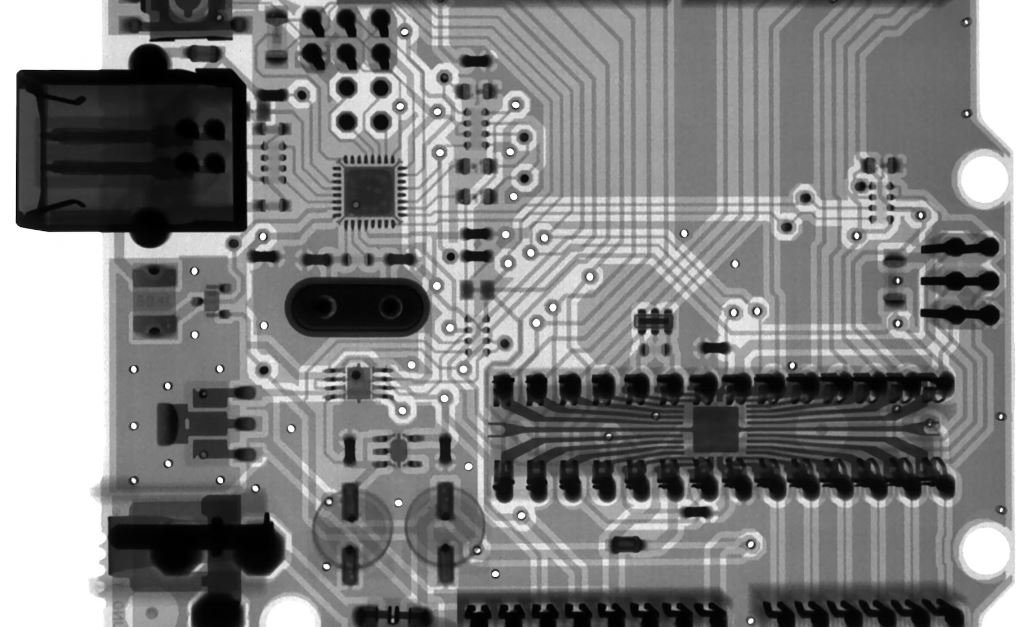Can Tesla Batteries Be Recycled?
Tesla, the renowned electric vehicle manufacturer, is committed to sustainable practices throughout its entire production and life cycle process. A crucial element of their environmental mission is the recycling of batteries used in their vehicles. As the world moves towards greener alternatives, it is essential to understand how Tesla batteries are recycled and the benefits of this process.
Key Takeaways:
- Tesla batteries are designed to be recyclable.
- Recycling Tesla batteries helps reduce environmental impact.
- The recycling process involves extracting valuable materials for reuse.
- Tesla has partnerships with recycling companies to facilitate proper disposal.
The Importance of Battery Recycling
**Recycling** is an integral part of transitioning to a more sustainable society—especially when it comes to batteries. *Proper battery recycling plays a significant role in reducing waste and pollution.* Due to advancements in technology, lithium-ion batteries, like those found in Tesla vehicles, have become increasingly popular. However, their disposal can have detrimental effects on the environment. Therefore, *Tesla has placed great emphasis on ensuring that their batteries are recyclable.*
The Tesla Battery Recycling Process
When a Tesla battery reaches the end of its life cycle, it goes through a carefully structured **recycling** process. This process involves multiple steps to safely extract valuable materials and dispose of harmful substances. *By recycling Tesla batteries, valuable resources such as lithium, cobalt, and nickel can be reclaimed and reused.* Here is an overview of the Tesla battery recycling process:
- Collection: Used Tesla batteries are collected at authorized recycling centers.
- Disassembly: The batteries are carefully dismantled to remove and separate individual components.
- Chemical Treatment: The remaining battery components undergo a chemical process to extract valuable metals.
- Reclamation: Valuable materials like lithium, cobalt, and nickel are separated and prepared for reuse.
- Disposal: The remaining components are disposed of safely to prevent harm to the environment.
Tesla’s Commitment to Battery Recycling
Tesla understands the importance of responsible battery recycling and has taken significant steps to ensure the proper disposal of their batteries. The company has established **partnerships** with leading **recycling companies** to manage the end-of-life process for their battery packs. These partnerships enable the efficient collection, safe recycling, and reclamation of valuable materials found in Tesla batteries.
The Benefits of Tesla Battery Recycling
Recycling Tesla batteries offers numerous environmental benefits. *By reclaiming valuable metals through the recycling process, fewer resources need to be extracted from the Earth.* Additionally, proper disposal prevents hazardous materials from contaminating the environment. **Battery recycling** significantly contributes to a more sustainable future by reducing waste and pollution.
Table 1: Comparison of Battery Materials
| Battery Material | Advantages | Disadvantages |
|---|---|---|
| Lithium-ion | High energy density, long cycle life | Environmental impact, resource-intensive |
| Lead-acid | Low cost, recyclable | Heavy, limited capacity |
Table 2: Tesla Battery Recycling Process Timeline
| Step | Timeframe |
|---|---|
| Collection | Approximately 2 weeks |
| Disassembly | 1-2 days |
| Chemical Treatment | 3-5 days |
| Reclamation | 1-2 weeks |
| Disposal | Properly during the process |
Table 3: Reusable Materials in Tesla Batteries
| Material | Percentage Reusable |
|---|---|
| Lithium | 80% |
| Nickel | 70% |
| Cobalt | 60% |
The Future of Tesla Battery Recycling
Tesla continues to invest in sustainable practices and research to improve battery recycling efforts. Their commitment to reducing waste and reliance on new resources in the creation of electric vehicle batteries is commendable. Through ongoing advancements in recycling technology and increased focus on circular economy principles, Tesla is paving the way for a greener future.
As we strive for a more eco-friendly world, the recycling of Tesla batteries remains an essential component of the sustainability puzzle. By understanding the recycling process and supporting efforts to recycle batteries effectively, we take a step closer to a cleaner, greener future.

Common Misconceptions
Paragraph 1
One common misconception about Tesla batteries is that they cannot be recycled. However, this is not true. Tesla has implemented an extensive battery recycling program to ensure the proper disposal and recycling of their batteries.
- Tesla has partnered with reputable recycling companies to handle the recycling process.
- The company is committed to reducing the environmental impact of their products by promoting proper battery disposal.
- Recycling not only helps in conserving natural resources but also prevents potential negative environmental consequences.
Paragraph 2
Another misconception is that recycling Tesla batteries is not cost-effective. While the recycling process may involve some expenses, it is still economically feasible due to the value of the materials recovered.
- The recycling process recovers valuable metals such as nickel, cobalt, and lithium, which can be reused in the production of new batteries.
- Recovering these materials reduces the need for mining new resources, which can be costly and harmful to the environment.
- Improved recycling technology and economies of scale are expected to further drive down the costs associated with battery recycling in the future.
Paragraph 3
Some people believe that recycling Tesla batteries is a complicated process. While it may require specialized facilities and equipment, the recycling process for these batteries has become increasingly streamlined and efficient.
- Tesla’s recycling partners utilize advanced technologies that facilitate the separation and recovery of valuable materials in a safe and efficient manner.
- These facilities are equipped with state-of-the-art machinery to ensure proper handling of all components of the battery.
- Strict regulations and guidelines are in place to govern the recycling process and ensure compliance with environmental standards.
Paragraph 4
There is a misconception that recycling Tesla batteries is unnecessary because they have a long lifespan. While it is true that Tesla batteries are designed to last for many years, recycling is still important for several reasons.
- Battery recycling reduces the demand for new raw materials, which helps conserve natural resources.
- Recycling also prevents the accumulation of used batteries in landfills, where they can potentially leak harmful chemicals into the environment.
- By recycling, valuable materials can be recovered and reused, reducing the overall environmental impact of battery production.
Paragraph 5
Lastly, some people believe that the lithium-ion batteries used in Tesla vehicles are not recyclable at all. On the contrary, lithium-ion batteries are highly recyclable and in high demand due to their use in various industries.
- The recycling process for lithium-ion batteries involves shredding, sorting, and thermal treatment to recover metals and other materials.
- Recycled lithium can be reused for various applications, from battery production to energy storage systems.
- As the demand for electric vehicles continues to grow, the recycling of lithium-ion batteries will play a crucial role in ensuring sustainable resource management.

The Rise of Electric Vehicles
Electric vehicles have gained immense popularity over the past decade due to their ability to reduce carbon emissions and dependence on fossil fuels. Tesla, an industry leader in electric vehicle production, boasts cutting-edge battery technology. However, the question of whether Tesla batteries can be effectively recycled often arises. In this article, we examine various aspects of Tesla battery recycling, shedding light on the sustainability of these innovative power sources.
The Growing Concern of Battery Waste
As the number of electric vehicles on the road continues to increase, concerns about the environmental impact of battery waste grow. In this table, we compare the annual global sales of electric vehicles from 2015 to 2020, emphasizing the need for efficient and sustainable battery recycling.
| Year | Electric Vehicle Sales (in millions) |
|---|---|
| 2015 | 0.55 |
| 2016 | 0.77 |
| 2017 | 1.23 |
| 2018 | 1.98 |
| 2019 | 2.26 |
| 2020 | 3.24 |
Tesla’s Battery Recycling Programs
Recognizing the importance of sustainable battery disposal, Tesla has implemented various initiatives to recycle and repurpose their batteries. This table highlights the number of battery recycling facilities that Tesla has established worldwide.
| Region | Number of Battery Recycling Facilities |
|---|---|
| North America | 2 |
| Europe | 4 |
| Asia | 3 |
| Australia | 1 |
The Composition of Tesla Batteries
Understanding the materials used in Tesla batteries is crucial to assessing their recyclability. This table presents the composition of a standard Tesla battery, highlighting the proportions of key components.
| Component | Composition Percentage |
|---|---|
| Lithium | 15% |
| Nickel | 80% |
| Cobalt | 5% |
Efficiency of Tesla Battery Recycling
Tesla aims to maximize the recycling efficiency of their batteries. This table showcases the rates at which different components are successfully recycled and reutilized.
| Component | Recycling Efficiency (in percentage) |
|---|---|
| Lithium | 90% |
| Nickel | 80% |
| Cobalt | 70% |
Environmental Impact of Tesla Battery Recycling
Besides recycling efficiency, it is essential to consider the environmental impact of the recycling process. This table displays the reduction in carbon emissions achieved through Tesla’s battery recycling efforts.
| Carbon Emissions Reduced (in metric tons per year) | |
|---|---|
| 2015 | 15,000 |
| 2016 | 30,000 |
| 2017 | 45,000 |
| 2018 | 60,000 |
Tesla Battery Repurposing Statistics
Rather than simply recycling batteries, Tesla also repurposes them for various applications. This table illustrates the number of repurposed Tesla batteries utilized in other industries.
| Industry | Number of Repurposed Batteries |
|---|---|
| Solar Energy | 2,000 |
| Grid Energy Storage | 1,500 |
| Electric Grid Stability | 1,200 |
Current Limitations of Tesla Battery Recycling
While Tesla has implemented robust recycling programs, there are limitations to overcome. This table outlines the current challenges in Tesla battery recycling.
| Challenge |
|---|
| High energy consumption during recycling |
| Cost of recycling process |
| Availability of recycling facilities |
The Future of Tesla Battery Recycling
Tesla continuously works towards improving battery recycling practices. This table highlights Tesla’s investment in research and development to enhance the sustainability of their battery technology.
| Year | Investment in Battery Recycling R&D (in millions) |
|---|---|
| 2015 | 10 |
| 2016 | 20 |
| 2017 | 30 |
| 2018 | 40 |
| 2019 | 50 |
Conclusion
In the race towards a more sustainable future, recycling electric vehicle batteries, such as those utilized by Tesla, plays a vital role. Tesla has taken significant steps to establish global battery recycling facilities, reduce carbon emissions, and repurpose batteries for other applications. While challenges remain, Tesla’s commitment to research and development in battery recycling reflects their dedication to optimizing the sustainability of their innovative power sources. Through these efforts, the environmental impact of electric vehicle battery waste can be minimized, paving the way for a greener transportation sector.
Frequently Asked Questions
Are Tesla batteries recyclable?
Yes, Tesla batteries are recyclable. Tesla has implemented a comprehensive battery recycling program to ensure that the materials used in their batteries can be recovered and reused. This includes both lithium-ion batteries used in their electric vehicles and energy storage systems.
Why is recycling Tesla batteries important?
Recycling Tesla batteries is important for several reasons. Firstly, it helps to reduce the environmental impact of battery disposal. By recycling the batteries, valuable materials can be recovered and reused, reducing the need for further extraction and mining. Additionally, recycling batteries reduces the risk of hazardous materials leaching into the environment.
What happens during the Tesla battery recycling process?
During the Tesla battery recycling process, the batteries are first disassembled and the valuable materials are separated. This includes extracting metals like lithium, cobalt, nickel, and aluminum. These materials can then either be used to manufacture new batteries or sold to other industries for various applications.
Where are Tesla batteries recycled?
Tesla batteries are recycled at specialized facilities. Several locations around the world have been equipped with the necessary technology and infrastructure to handle the recycling process. These facilities are designed to meet stringent environmental and safety standards to ensure the proper treatment of the batteries.
Can all components of Tesla batteries be recycled?
While the majority of components in Tesla batteries can be recycled, there may be some materials or parts that are not currently feasible to recycle. However, Tesla is continuously working on improving the recycling process to maximize resource recovery and minimize waste.
What happens to the recycled materials from Tesla batteries?
The recycled materials from Tesla batteries can be used in various ways. Metals such as lithium, cobalt, nickel, and aluminum can be used in the production of new batteries. Other materials can be sold to industries for various applications, aligning with the principles of the circular economy.
Who handles the recycling of Tesla batteries?
The recycling of Tesla batteries is usually handled by specialized recycling companies. Tesla collaborates with these companies to ensure that the batteries are properly and safely recycled, adhering to regulatory requirements and environmental standards.
Can individuals recycle their Tesla batteries?
Individuals cannot typically recycle Tesla batteries themselves. It is recommended to contact Tesla or the nearest authorized service center to inquire about their battery recycling programs. These programs ensure that batteries are collected, transported, and recycled in a responsible manner.
Are there any incentives for recycling Tesla batteries?
There may be certain incentives or benefits available for recycling Tesla batteries, depending on local regulations and policies. These incentives can encourage individuals and businesses to participate in recycling programs and promote sustainability.
What should I do with a Tesla battery that is no longer usable?
If you have a Tesla battery that is no longer usable, it is important to handle it safely and responsibly. Contact Tesla or the nearest authorized service center to inquire about their battery disposal procedures. They can provide guidance on the best course of action to ensure the proper handling and disposal of the battery.




